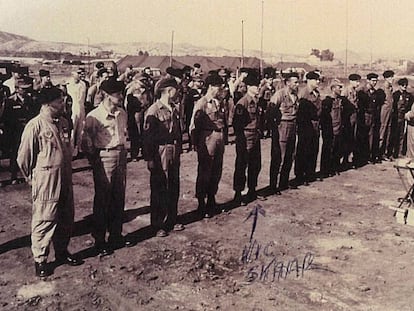The Soviet scientist who disappeared in 1980s Madrid
Vladimir Alexandrov went missing without a trace after spending three days drinking heavily in Spain
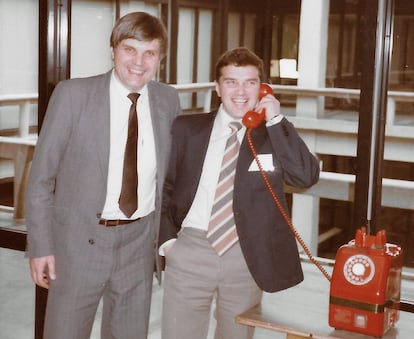
It¡¯s March 31, 1985 and the countercultural scene known as ¡°La Movida¡± is in full swing in Madrid. One of the most important scientists from the Soviet Union, Vladimir Alexandrov, has just arrived from C¨®rdoba after participating in the Assembly of Non-Nuclear Cities on the invitation of the city¡¯s mayor, Julio Anguita of the Spanish Communist Party.
Alexandrov, 47, had been in Spain for three days and was reportedly drunk throughout that time. But the night that he arrived back in Madrid from C¨®rdoba, he disappeared and nobody has seen him alive ever since.
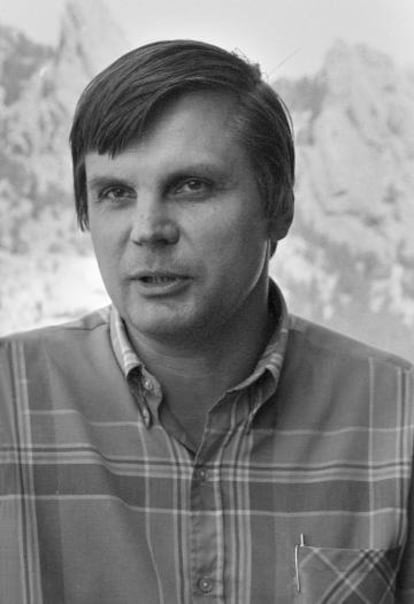
An Italian historian named Giulia Rispoli has recently published the story of the Soviet climate scientist in a new book called From the Cold War to Global Warming. ¡°I don¡¯t think Alexandrov defected,¡± says Rispoli, a researcher at the Max Planck Institute for the History of Science in Berlin who points out he had a wife and a daughter back in Moscow. Another five scientists who worked with him also dismiss the defection theory.
So what happened to Vladimir Alexandrov?
In March 1983, the American astronomer Carl Sagan had warned of the catastrophic effects of a potential nuclear war on the planet¡¯s climate. Three months later, in the Computing Center in Moscow, Alexandrov¡¯s team started to study the issue: if the US and the USSR used just a third of their atomic arsenals, the contamination would darken the sky for months and temperatures would drop to -30?C. It would, in effect, herald the end of the human race.
I don¡¯t think that Alexandrov defected
Italian historian Giulia Rispoli
Alexandrov effectively became, says Rispoli, the Soviet spokesman for the nuclear winter theory ¨C a perfect hypothesis with which to pit the US anti-nuclear movement against the US government. The Soviet research scientist had great freedom to travel around the world, an unusual privilege during the Soviet era. He went to the Vatican with Sagan to warn Pope John Paul II about the potential atomic disaster; he spoke in the US Senate; he welcomed US scientists into his home in the center of Moscow; and he traveled to the US to collaborate with them on climate simulations. If he was not a US or a Soviet spy, he certainly looked like one.
When he arrived in Madrid on Friday, March 29, 1985 on his way to his speaking engagement in C¨®rdoba, Alexandrov was treated like a king. A chauffeur named Jos¨¦ Moreno was sent to pick him up at Barajas airport in Anguita¡¯s official car, a Seat 132, and drive him down to C¨®rdoba.
According to an article written by US journalist Andrew Revkin in July 1986, Alexandrov went first to the Soviet Embassy in Madrid and when he emerged, he asked Moreno to drive him urgently to a bar. He seemed changed.
¡°Alexandrov was a complete powerhouse, drunk 24 hours a day,¡± says Margarita Ruiz Schrader, who organized the C¨®rdoba conference. According to a story in EL PA?S, on Saturday, March 30, he gave his talk but refused to speak to the press. ¡°No one saw him until Sunday morning when he turned up again at the conference headquarters in a state of apparent inebriation,¡± the article said.
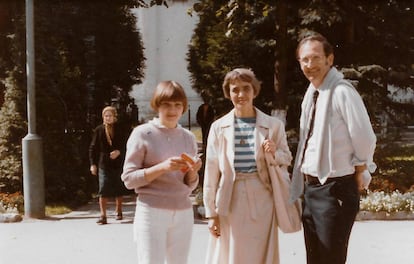
Two drivers from C¨®rdoba City Hall took him back to Madrid, and dropped him off at the Soviet Embassy. On the way there, Alexandrov sounded like a stuck record. ¡°Restaurant. Stop,¡± he said over and again. The journalist Andrew Revkin figures that he was last seen outside a bingo hall next to his hotel on Paseo de La Habana.
¡°He was very open and I considered him to be a good friend,¡± says the climatologist Jerry Potter, who received a visit from Alexandrov in 1983 at the Lawrence Livermore National Laboratory, the only institution besides Los Alamos that was dedicated to developing atomic bombs in the US. ¡°We set up an office for him in a building outside the restricted access zone, and he was accompanied at all times. He stayed with me at my house in Benecia, California. We went to work together, and at night we would have his favorite drink, tequila with a slice of lemon.¡±
¡°I suspect that the KGB decided that Alexandrov was too Americanized and comfortable with his American colleagues and could be a threat,¡± says Potter, who is now a researcher with NASA. The Spanish historian Lino Camprub¨ª, who collaborated with Rispoli on the book, flagged up ¡°similarities¡± with the case of the Saudi journalist Jamal Khashoggi, who was allegedly murdered inside the Saudi Consulate in Istanbul last October. Curiously, there is not even a record of Alexandrov¡¯s visit in what is now the Russian Embassy in Madrid, as all the documentation was sent to Moscow after the USSR broke up, according to a spokesman.
I have not been able to find one reason why any organization would want to murder him
Climatologist Michael MacCracken
The climatologist Alan Robock, from Rutgers University, also had Alexandrov over at his house. ¡°When I showed him my water bed, he touched it and jumped back when he saw the ripple on its surface,¡± he recalls. ¡°A scientist who used to work at General Motors told me some years ago that, during a cocktail party in Washington, he had spoken to a former KGB agent who told him he knew another former agent who had killed Alexandrov. But who knows if this is what really happened?¡±
Rispoli has a different theory. Alexandrov traveled freely to the US, and was even able to take his family with him. He was one of the USSR government¡¯s pet scientists. ¡°Why would the Soviets kill him if he could be a valuable source of information about the US,¡± says Rispoli. ¡°I am more inclined to think it was a CIA operation. The Americans were far more worried about Alexandrov¡¯s activities than the USSR was. He might have had knowledge about top-secret missions while he used the US computing systems.¡±
¡°The CIA was deeply concerned by the access that Vladimir had to the Cray super computer inside the US National Center of Atmospheric Research,¡± says Mike Wallace, now a professor emeritus at Washington University. ¡°I never understood what they were afraid he would do.¡± According to Wallace, however, the CIA had nothing to do with Alexandrov¡¯s disappearance in Madrid.
¡°I believe it is far more likely that he was the victim of some kind of foul play that was not related to political intrigues,¡± says Wallace. ¡°Perhaps it was simply a robbery. I know he was an alcoholic. I never saw him drunk but I have talked to friends who knew him better who said he sometimes drank too much. If he was drunk that night, he would have been at greater risk of being mugged.¡±
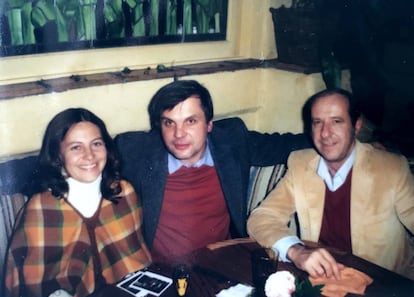
¡°The CIA seemed interested in Alexandrov¡¯s freedom of movement but he didn¡¯t seem interested in anything beyond his own research,¡± says the climatologist Michael MacCracken. ¡°He didn¡¯t have advanced computer skills, and during his visits he just wanted to go shopping to buy his wife cosmetics ¨C lipstick, for example, because apparently they didn¡¯t have that in Moscow.¡±
Now the director of the Climate Institute in Washington, MacCracken has another theory that is shared by journalist Andrew Revkin. ¡°There may have been an exaggerated reaction to his supposed drunkenness by the Cuban security guards employed at the Soviet Embassy,¡± he says.
There could have been ¡°an accident¡± ¨C the body swept under the carpet to avoid a diplomatic crisis. ¡°Really, I have not been able to find a reason why any organization would want to kill him,¡± MacCracken adds.
¡°One thing is for sure: he is not alive¡±
Vladimir Alexandrov lived with his family in an apartment in the center of Moscow in a six-story grey building in Arjpova Street just a stone¡¯s throw from the Moscow Choral Synagogue and an easy stroll to the KGB¡¯s headquarters in the Lubyanka building. Nowadays, this street is known as Bol'shoy Spasoglinishchevskiy and the neighborhood, which is full of bars, caf¨¦s and shops, is one of the liveliest in Moscow.
In the block where Alexandrov¡¯s family lived, there are now some tourist apartments as well as a beauty salon and a hipster barber shop. And not a trace of the scientist. One of the long-term residents of the building says he does not remember either Alexandrov or his family. And in the small bookshop on the ground floor of the building, the owner is surprised by the story.
The Russian physicist Georgiy Stenchikov, who now works at King Abdullah University of Science and Technology in Saudi Arabia, was Alexandrov¡¯s prot¨¦g¨¦ in the Computing Center in Moscow. ¡°One thing for sure, he¡¯s not alive,¡± he says. ¡°I loved his family and his daughter. He would now have an adorable granddaughter. I don¡¯t think he wouldn¡¯t be trying to get in touch with them if he was still alive.¡±
English version by Heather Galloway.
Tu suscripci¨®n se est¨¢ usando en otro dispositivo
?Quieres a?adir otro usuario a tu suscripci¨®n?
Si contin¨²as leyendo en este dispositivo, no se podr¨¢ leer en el otro.
FlechaTu suscripci¨®n se est¨¢ usando en otro dispositivo y solo puedes acceder a EL PA?S desde un dispositivo a la vez.
Si quieres compartir tu cuenta, cambia tu suscripci¨®n a la modalidad Premium, as¨ª podr¨¢s a?adir otro usuario. Cada uno acceder¨¢ con su propia cuenta de email, lo que os permitir¨¢ personalizar vuestra experiencia en EL PA?S.
?Tienes una suscripci¨®n de empresa? Accede aqu¨ª para contratar m¨¢s cuentas.
En el caso de no saber qui¨¦n est¨¢ usando tu cuenta, te recomendamos cambiar tu contrase?a aqu¨ª.
Si decides continuar compartiendo tu cuenta, este mensaje se mostrar¨¢ en tu dispositivo y en el de la otra persona que est¨¢ usando tu cuenta de forma indefinida, afectando a tu experiencia de lectura. Puedes consultar aqu¨ª los t¨¦rminos y condiciones de la suscripci¨®n digital.

